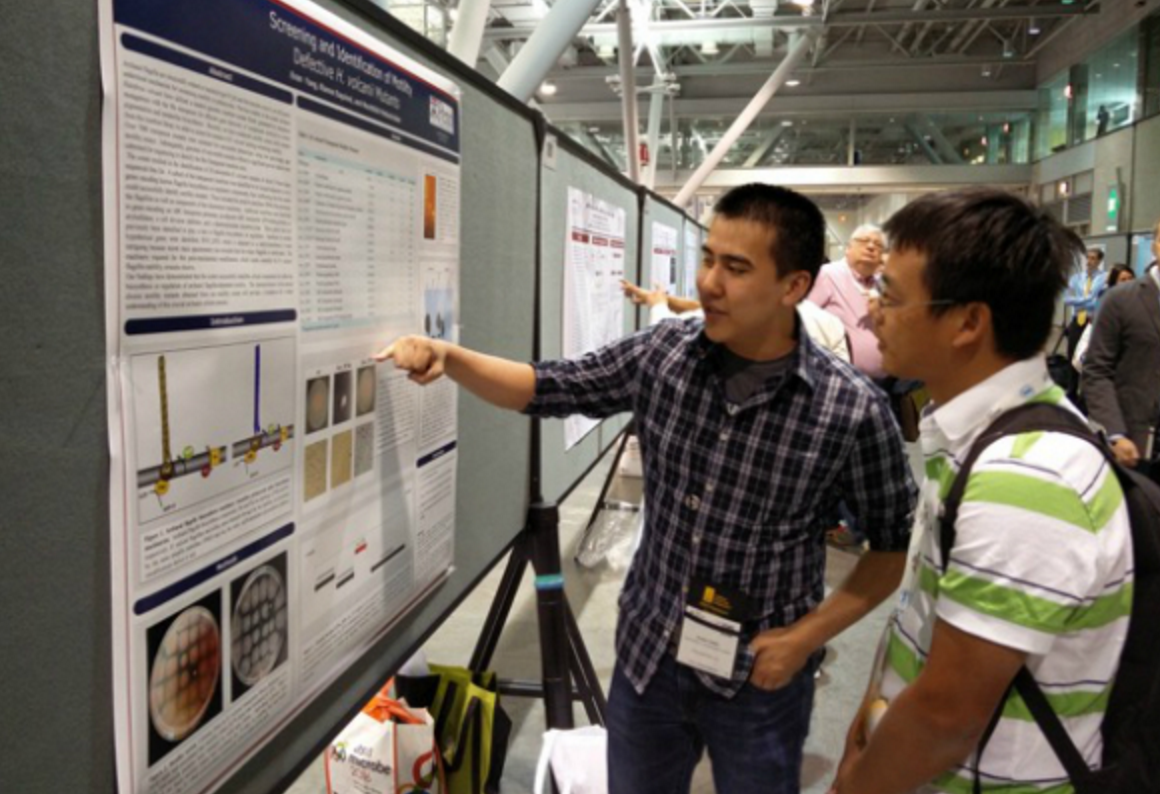NASA's long search for life on Mars came to a thrilling turning point with the recent discovery of liquid water on the planet. One undergraduate researcher aims to understand how microbial life could thrive in such extreme, even extraterrestrial, environments.
Evan Yang, C’17, a double major in biology and biochemistry, has been working in the lab of Mecky Pohlschröder, a professor of biology, since his freshman year.
“It was clear that Evan had so much enthusiasm for science and that to me is always the key," Pohlschröder says.
Supported by funding from NASA, the Pohlschröder lab investigates proteins that confer stability, facilitate motility, and mediate adherence to surfaces in the single-celled organism Haloferax volcanii. Originally isolated from the Dead Sea, H. volcanii thrives in extremely salty environments and can tolerate high levels of ultraviolet and gamma radiation—conditions that happen to also be found on Mars.
To pinpoint characteristics that could allow microbes to prosper in Mars-like environments, Yang has worked to characterize genes responsible for how H. volcanii move. Recently, he’s identified a diverse set of H. volcanii mutants that have lost the ability to swim, suggesting that a multitude of genes play a role in allowing cells to move toward nutrients and escape from stressful environments.
“Right now,” says Yang, “I’m focusing on a mutant that not only has impaired motility, but also cannot form biofilms, cell aggregates that prokaryotes form to protect them from stressful environments similar to those exhibited on Mars.”




